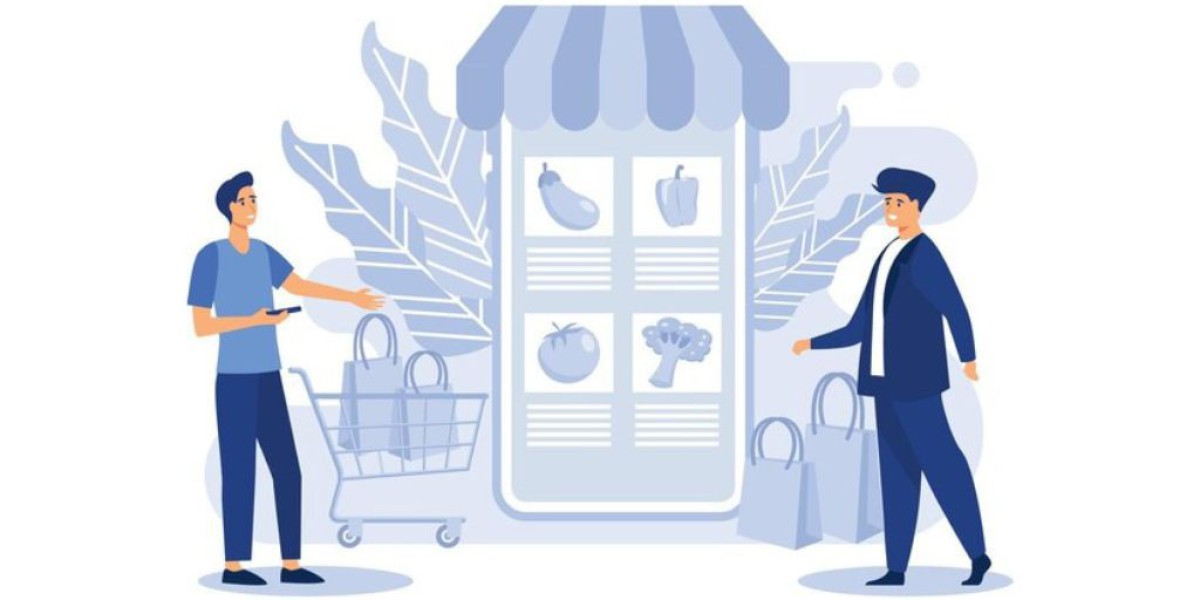The on-demand business model has gained tremendous popularity in recent years, disrupting several traditional industries. Services like ride-hailing, food delivery, hyperlocal e-commerce etc have provided impressive conveniences. However, maintaining growth pace is challenging especially for startups with tight budgets amid growing competition. While well-funded players expand aggressively, it is essential for low-budget on-demand ventures to constantly optimize and innovate to survive.
This article outlines key strategies a cost-conscious on-demand service can leverage to revamp operations and stay ahead. Despite resource constraints, with diligent execution of the right strategies discussed here, it is very much possible to grow sustainably.
Streamline Operations
A thorough process audit can help identify redundant tasks wasting time and money. For example, manual dispatch of orders and status tracking can be automated through workflow management tools. Chatbots powered by AI can be deployed to handle routine customer queries, freeing up support agents for complex issues.
Smart routing and dynamic pricing algorithms make deliveries more efficient. Integration of last-mile optimization solutions facilitates load planning and route mapping. Fleet management tools enable real-time tracking, improve resource utilization and reduce mileage.
Labor costs account for a major expense. Scheduling staff based on demand patterns optimizes headcount. Leveraging part-time flexible workers during peak hours lowers fixed costs. Outsourcing non-core tasks to virtual assistants offshore cuts overhead. Automation and digitization streamline paperwork reducing manual work.
Refine Marketing Strategy
Organic social media marketing has low upfront costs but high ROI if done right. Engage customers through relevant, creative and local content on platforms like Facebook, Instagram, Nextdoor etc. Build an engaged community by addressing member queries promptly and promote relevant offers.
Partner with hyperlocal bloggers and Instagrammers popular in target areas. Send them complimentary products/services in return for reviews and shoutouts. Such local influencers help gain trust and new customers within limited budgets.
Leverage search engine optimization to rank higher for relevant searches. Target long tail, high intent keywords. Enhance website usability through simple, intuitive navigation and minimal friction during signup/checkout. Maintain a positive online reputation by addressing customer complaints on review sites. Checkout: https://zipprr.com/gojek-clone/
Improve Customer Experience
Superior service quality builds loyal, repeat customers crucial for sustainable growth. Track key metrics like order fulfilment times, errors, driver behaviour to plug inefficiencies.Deploy a robust customer support system to address issues within minutes through phone/email/chat.
Offer flexible scheduling, payment options and loyalty programs. Personalize the app interface based on usage patterns. Gamify discovery through rewards and leaderboards to boost engagement. Gather actionable feedback regularly through surveys. Analyze qualitative reviews to enhance service quality according to customer needs.
Build a network of well-trained, motivated gig workers ensuring consistent, hygienic, safe and courteous delivery experiences. Onboard them through thorough background verification and training modules. Equip them with tools like GPS enabled devices for smooth coordination. Empower them through competitive pay and incentives.
Expand Serviceable Areas
Segment potential localities based on socio-economic profiles, population density, road infrastructure, demand patterns etc. Prioritize expansion of coverage to other high potential neighborhoods within same city or adjoining towns requiring modest additional investments.
Conduct soft launches testing waters in peripheral areas before investing significantly in fleet/warehousing infrastructure. Gradually scale based on reception, utilising spare capacities during initial months. Promote through nearby user referrals availing sign-up bonuses. Extend only to viability proven neighborhoods minimising risks.
Tie up with neighbourhood shops, kirana stores as last mile fulfillment hubs for nearby deliveries curtailing costs. Partner with complementary services like laundry, plumbing, housekeeping etc extending value proposition. Bundle offerings under a single brand for cross-selling.
Enhance Mobile Experience
Mobile has emerged as the dominant channel today. Design responsive interfaces optimizing usability across devices. Enable one-touch account creation, login, payments etc. Streamline the app flow focusing on key actions like browsing, adding to cart and ordering.
Integrate location services to suggest nearby outlets, identify pickup/drop points. Leverage geo-fencing based push notifications for customized offers, upcoming promotional events. Implement intuitive filters, category-wise browse, search and autosuggest for discoverability.
Deploy in-app browser for web-like experience minimizing redirects outside app. Engage users through interactive elements like order tracking, estimated times, live order statuses. Promptly address issues and offer refunds/rewards maintaining credibility. Facilitate direct messaging for quick doubt resolution, feedback.
Build Partnerships
Collaborate with cross-industry players having complementary target audiences through referral partnerships. For example, tie-ups with hyperlocal classifieds, grocers, gyms etc attracting new verticals of customers.
Partner with retail chains as pickup/fulfillment points improving coverage. Integrate their loyalty program for mutual benefits. Forge associative alliances leveraging joint branding and promotions across platforms.
Launch an affiliate program commissioning participating vendors, individuals for bringing new users. Incentivize through performance-based credit budgets redeemable on the platform.
Leverage open API’s infrastructure allowing third-party innovators to build integrations extending reach and hyper-personalization. Encourage socially driven crowd-tasking through challenges, contests fostering engagement.
Drive Repeat Customers
segment top spenders and loyal users for VIP perks. Craft personalized assortments based on past purchases. Set spending/order quantity thresholds for rewards redemption, free trials of premium services.
Nurture subscribers through dedicated newsletters highlighting category-wise trends, DIY tutorials. Highlight subscription benefits like free deliveries, deals and experiences through reminders. Adapt pricing and bundles specifically for members.
Build habits by incentivizing recurring or subscription-based orders of groceries/medicines/household supplies through billbacks, installment programs. Enable reorders and saved carts/lists for recurring items simplifying repurchases.
Deploy feedback surveys analyzing satisfaction touchpoints for experience enhancement. Reward participation through loyalty points redeemable against future spends. Trigger automated trip rebates, vouchers on birthdays further strengthening stickiness.
Identify New Revenue Streams
Monetize unused fulfillment capacities through white labeling arrangements with other logistics/delivery startups requiring infrastructure support temporarily. Franchise the hyperlocal last-mile delivery model helping budding entrepreneurs bootstrap own ventures while generating additional income.
Sell anonymized user behavior and preferences data to manufacturers, retailers wishing to hyper-target ads and offerings. Partner with product brands to market via sponsored/curated listings filling vacant inventory slots earning commissions without investments.
Generate recurring ad revenues through display slots within app/site or notifications. Experiment with sponsored filters/categories directing users to promoted services. Such non-core revenue diversifies cashflows improving unit economics sustaining future expansions.
Leverage Data Analytics
Data holds immense value guiding decisions. Develop internal analytics capabilities or leverage third-party tools. Gain deep customer and operational insights analysing metrics like user registrations, pageviews, time spent, abandonment rates, demographics, buying patterns etc.
Understand location-wise demand variability, category preferences, top selling periods to pre-position inventories and staffing. Identify underperforming categories/products/drivers for corrective steps through correlation of interconnected multidimensional datasets.
Continuously A/B test minor interface tweaks, call-to-action button placements measuring responses. Use surveys and focus groups qualifying hypotheses to optimise processes generating maximum engagement and conversions within means. Personalize offerings based on individual profiles and past shopping behaviours for stickiness.
Optimize Pricing
Leverage dynamic pricing intelligently adjusting rates in real-time based on demand-supply mismatches, day/hours, locations, inventory levels etc to maximise revenues and resource utilisation. Offer occasional markdowns or bundled packages during off-peak, sluggish periods liquidating unsold stocks avoiding wastage.
Remain competitive undercutting rivals by slight margins for scale without burning cash on promotions and freebies. Promote value-for-money private labels expanding margins. Charge nominal but justified convenience fees sustaining operational costs and exceptional services year-round. Explore premiumisation of selected top-selling categories or subscription models if products allow.
Conclusion
On-demand enterprises with limited budgets can revitalise operations through streamlining redundancies, relentless focus on superior user experiences, data-led innovation and forging synergistic partnerships. Thinking out-of-the-box to introduce ancillary revenue streams boosts viability while prudent fiscal management sustains balanced growth. With the right strategy execution aligning to available means, low-capex on-demand startups can certainly achieve scaling sustainably even amid high competition. Continuous optimisation is key to remaining relevant in the dynamic on-demand ecosystem.



